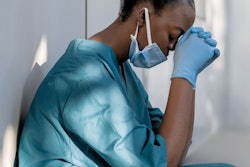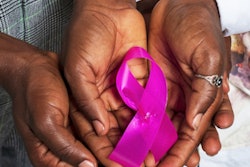
Breast imagers are working harder to maintain the same productivity, as measured by relative value units (RVUs) year to year, even as the COVID-19 pandemic led to a decrease in mammography volume, according to data presented at the Society of Breast Imaging/American College of Radiology Breast Imaging Symposium.
In an April 10 presentation at the symposium, Dr. Donna Plecha from Case Western Reserve University in Ohio talked about benchmark data collected by the Association of Administrators in Academic Radiology (AAAR) that showed how the COVID-19 pandemic disrupted the trend of increasing RVUs per radiologist over the past few years. Perhaps, as a result, imagers and technologists are having to perform more work to keep RVUs above 2017-2018 volumes.
The pandemic affected breast imaging volumes in 2020 as many facilities put their mammography screening programs on pause, a trend also identified in another talk from the conference. This can be seen in data for March, April, and May of 2020, Plecha said.
Plecha presented data from 462 breast imagers from 85 institutions across the U.S. who completed a survey by the AAAR. Each "year" that was measured had data taken from July 1 through June 30. Each respective institution varied in its radiology department's size, complexity, expectations, and external factors such as the COVID-19 pandemic.
The results showed that total work RVUs of breast imagers for 2019-2020 in the 90th percentile of productivity exceeded 10,000. For the 2018-2019 year in the same percentile, that number was around 12,000. Still, this was an increase from the total work RVUs of 9,000 in the 2017-2018 year.
Meanwhile, the total number of breast imaging procedures for the last recorded year was less than the 2018-2019 and 2017-2018 numbers, with around 6,000 for the 20th percentile and 10,000 for the 90th percentile.
"Even with the hit of COVID, we are still in these higher percentiles above 2017-2018," Plecha said.
Technologists are also doing more work than in previous years. Benchmark data from Premier showed that technologists are performing an average of 13.2 mammograms a day for 2021, compared with 9.34 in 2019.
"To stay in the same bracket, you have to do more mammograms per day as a technologist," Plecha said. "We're doing more work with the same amount of staff technologist-wise, as well as the radiologists doing more work every year until the pandemic hit."
Plecha said these trends should be addressed so radiologists and technologists don't experience burnout.
"I do not think it [the overall data] was a large surprise, because the COVID effect was only for four months, since it was from July 1 to June 30 for all sites," Plecha told AuntMinnie.com. "However, it was unclear how to predict it. I think we were unsure what we were going to see."



















